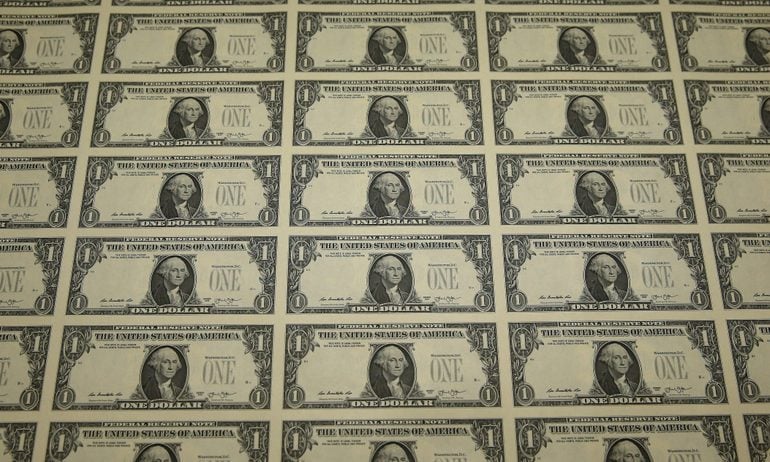Value of the U.S. Dollar, Explained
The U.S. dollar is assessed by its purchasing power and exchange rate relative to other currencies.

Many, or all, of the products featured on this page are from our advertising partners who compensate us when you take certain actions on our website or click to take an action on their website. However, this does not influence our evaluations. Our opinions are our own. Here is a list of our partners and here's how we make money.
The U.S. dollar is usually considered a safe haven, especially during times of market volatility and economic uncertainty. However, the value of the dollar has been falling as investors sell U.S. assets amid President Donald Trump’s escalating trade war and mounting concerns about U.S. economic growth.
What is the value of the dollar?
The value of the U.S. dollar is measured in two ways: domestically and internationally.
Domestically, the value of the dollar is also known as its purchasing power. The dollar’s value is tied to prices and inflation. When prices go up, the purchasing power of the dollar goes down. When prices go down, the purchasing power of the dollar goes up.
Internationally, the value of the dollar is measured against the strength of other currencies, also known as the exchange rate. If the exchange rate for a dollar rises compared to another currency, the dollar is getting stronger. Conversely, if the exchange rate for a dollar goes down compared to another currency, the dollar is weakening.
» MORE: How is the economy doing?
How much is the U.S. dollar worth now?
The dollar index measures how the dollar compares to other currencies.
In recent years the dollar index has fluctuated — dipping sharply during the pandemic, then rising to highs at the peak of inflation in summer 2022. Since then, the dollar’s value has been more volatile, reflecting changing economic conditions. In 2025, the value of the dollar has declined, largely due to market uncertainty tied to Trump’s protectionist policies and broad sweeping tariffs.
What determines the value of the dollar?
The U.S. dollar is considered a fiat currency, which means it’s not backed by a commodity, like gold. It has value since the government declares it legal tender. But its actual market value is not determined by the government. Instead, it’s largely determined by supply and demand, both domestic and international. Factors that go into dollar supply and demand include:
Trade policy and geopolitical climate. Tension with foreign countries may lead to restrictive trade policy that tends to increase costs for businesses, which may decrease demand. Restrictive trade policies often lead to volatility in investment markets. When there’s instability in global financial markets, the dollar tends to increase in value since it’s considered a safe haven for investors. But when the economy of the U.S. is itself unstable, then investors may sell-off U.S. assets, which weakens the value of the dollar.
Monetary policy. Interest rates influence investments, which in turn impact the dollar value. High interest rates are more desirable to investors so the demand for the dollar increases. Lower interest rates create less demand for the dollar so the value declines.
Inflation. High inflation erodes purchasing power, which leads to a decline in dollar value.
Economic indicators. Measures of economic health including growth, inflation and employment data all influence market sentiment, consumer sentiment and economic forecasts. Currency tends to be valued higher in more stable economic periods.
Market sentiment. All of the above can impact investor assessment and expectations, which influence how investments are made. Positive market sentiment about the U.S. economy can increase the value of the dollar and vice versa.
» MORE: Treasury bonds overview
What happens when the dollar weakens?
When demand for the U.S. dollar goes up, so does the value of the dollar. A strong dollar makes imported goods and services cheaper for U.S. consumers and businesses. It also means that U.S. goods in foreign countries are more expensive. A strong dollar tends to ease inflationary pressures in the U.S. But a strong dollar could reduce demand for imports from U.S. businesses, which could slow growth.
Conversely, when demand for the U.S. dollar goes down, so does its value. When a dollar weakens, it has less strength than other currencies. When the dollar doesn’t go as far as it once did, here’s what happens:
Purchasing power goes down, which means goods and services become more expensive for U.S. consumers.
International travel gets more expensive for Americans.
U.S. exports become cheaper for foreign buyers.
Investment in U.S. assets like stocks and bonds may decline.
» MORE: Are we in a recession?
(Photo by Mark Wilson/Getty Images News via Getty Images)

